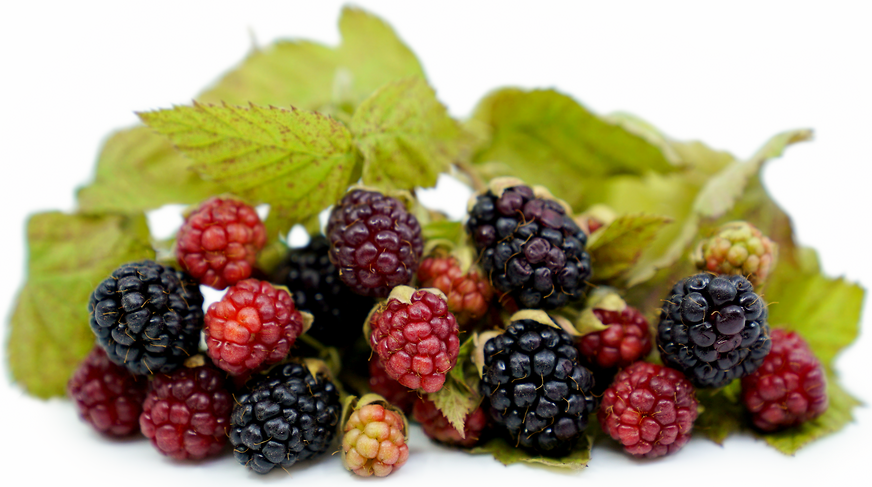


Loganberries
Estimated Inventory, 12 ct : 0
Description/Taste
Loganberries grow on vigorous, productive vines known as brambles. The bright red berries are an aggregate fruit made of tiny, firm yet plump drupes. The medium to large berries can be up to 4 centimeters in diameter and have an elongated conical form like a raspberry and solid core like a blackberry. They mature to a deep, wine-red and if left on the vine will turn a darker purple. Loganberries offer a raspberry aroma and a tart and slightly sweet flavor.
Seasons/Availability
Loganberries are available during the summer months.
Current Facts
Loganberries are a hybrid bramble berry variety botanically classified as Rubus loganobaccus. The berries were named after their creator James Harvey Logan who was the first to cross a blackberry with a raspberry. The heirloom variety has its origins in California but is more popularly cultivated in the Pacific Northwest and New England regions of the United States. They are not produced on a large scale due to labor-intensive harvesting and a short shelf life. Many growers keep them on the vines until the last minute to ensure the most flavorful berries.
Nutritional Value
Loganberries are an excellent source of manganese, an essential nutrient for the body, and vitamin C. They are a good source of pantothenic acid or vitamin B5, iron, folate, vitamins E and K, and essential B-vitamins thiamin and riboflavin. The richly colored, nutritious berries are also a source of niacin, magnesium, vitamin A, zinc, phosphorus, calcium, potassium, choline, selenium and offer traces of copper and sodium.
Applications
Loganberries can be used like raspberries or blackberries. Very ripe berries are ideal for fresh eating so younger, tarter berries lend well to canning, jamming, and freezing. They can be added to garden salads, ice creams, sorbets, cooked into compotes or syrups and added to smoothies or cocktails. Sugar is highly recommended for sweet applications. For savory applications pair Loganberries with gamey meats or duck, serve alongside fresh, creamy or aged cheeses. Complimentary ingredients include pistachios, pine nuts, almonds, other bramble berries, stone fruits like peaches and nectarines, vanilla, aged balsamic vinegar, bitter greens, fresh and dried figs, fennel, bacon and basil. Macerate Loganberries for flavoring vinegars, liquors, or wine. They can be frozen or canned to preserve. Store them at room temperature for a couple of days or refrigerate for up to a week.
Ethnic/Cultural Info
Loganberries have been used for both their flavor and their vitamin C for over a century. At one time, the British Navy gave their sailors Loganberries as a preventative measure against scurvy. The high vitamin C content and firmness also helped the berries keep longer on sea voyages. Loganberries are used for flavoring several products from Twinings® teas to wine and syrups. People living near Fort Erie, Ontario, Niagara Falls and Buffalo, New York may also be familiar with Aunt Rosie’s or Crystal Beach Loganberry drink, a tart beverage made popular by an amusement park on Lake Erie.
Geography/History
Loganberries were first developed in the late 1800s by attorney and horticulturist, James H. Logan in Santa Cruz, California. Logan's intentions were to improve upon existing berry varieties through natural cross-pollination. Since their introduction around 1880, Loganberries have been used in crosses between various Rubus species, such as boysenberry (Loganberry × raspberry × blackberry) and the olallieberry (black logan × youngberry). The original cultivar bore berries along prickly canes. More recently thorn-less varieties have been introduced which may lead to greater cultivation. Today, Loganberries grow both wild and in cultivation throughout the Pacific and New England areas of the United States and have been naturalized in both the United Kingdom, Australia and Tasmania. They may be spotted at local markets or specialty grocers.
Recipe Ideas
Recipes that include Loganberries. One




